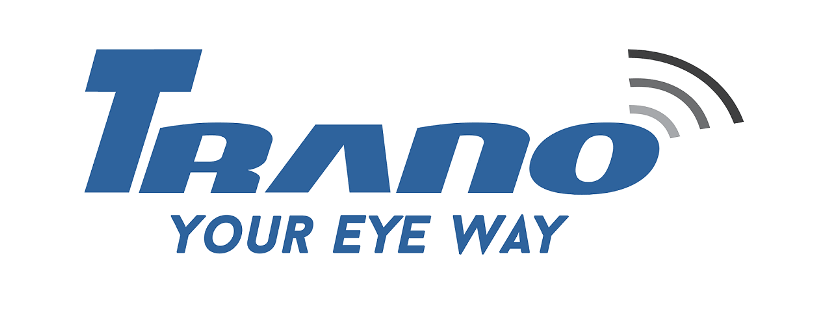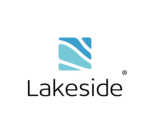Description

Oomnitza

Zylo
Comprehensive Overview: Oomnitza vs Zylo
Here's a comprehensive overview of Oomnitza and Zylo, focusing on their functions, market targets, market share, user base, and key differentiators.
Oomnitza
a) Primary Functions and Target Markets
- Primary Functions: Oomnitza is an enterprise technology management platform that provides a comprehensive asset management solution. It focuses on IT asset management across the hardware, software, and cloud landscape. Key features include lifecycle management, workflow automation, and integration capabilities for managing IT assets like laptops, mobile devices, software licenses, and cloud resources.
- Target Markets: Oomnitza primarily targets large enterprises and mid-sized companies that require robust asset management solutions. These businesses often operate in sectors like technology, finance, healthcare, and any industry with significant IT infrastructure investments.
b) Market Share and User Base
- Market Share: Oomnitza holds a competitive position in the IT asset management space, which is a relatively niche market compared to broader IT management or enterprise software markets. Exact market share figures are less frequently disclosed, but Oomnitza is recognized as a growing player with increasing adoption.
- User Base: The user base includes IT departments, asset managers, and organizations that emphasize strong governance of IT assets. It tends to appeal to businesses that prioritize compliance, security, and efficiency in their IT operations.
Zylo
a) Primary Functions and Target Markets
- Primary Functions: Zylo is a SaaS management platform aimed at optimizing software investments. It provides visibility and management tools for cloud software subscriptions, helping businesses manage their software spend, improve utilization, and enforce compliance. Its features include software discovery, spend analysis, and license optimization.
- Target Markets: Zylo primarily targets companies with significant cloud software usage, including large enterprises and mid-market businesses across industries such as technology, marketing, and professional services. These companies often face challenges in managing the sprawl and costs associated with SaaS applications.
b) Market Share and User Base
- Market Share: Zylo is noted as a leading player in the emerging SaaS management space, a market that is rapidly gaining traction as businesses increasingly adopt cloud-based software solutions. It's one of the earlier entrants in this specific market segment, allowing it to establish a strong presence.
- User Base: Its user base typically consists of IT procurement teams, finance departments, and business units managing multiple SaaS applications. Companies use Zylo to gain insights into SaaS usage and costs, ensuring alignment with business objectives.
c) Key Differentiating Factors
-
Focus and Scope:
- Oomnitza primarily focuses on IT asset management across hardware, software, and cloud, while Zylo specifically targets SaaS management and optimization.
-
Integration and Workflow:
- Oomnitza offers extensive integration capabilities with various IT and business systems, allowing for comprehensive workflow automation around IT asset management.
- Zylo emphasizes integrations with SaaS applications and financial systems to streamline software usage tracking and cost management.
-
Market Positioning:
- Oomnitza positions itself as a comprehensive technology management platform, appealing to IT asset managers seeking to manage a wide range of assets.
- Zylo markets itself as a solution for harnessing the benefits and managing the complexities of SaaS ecosystems, targeting organizations heavily invested in cloud applications.
-
User-Centric Features:
- Oomnitza is designed with IT departments in mind, offering robust controls and detailed asset lifecycle management tools.
- Zylo prioritizes user-friendly dashboards and analytics geared towards optimizing software spend and improving subscription visibility from an enterprise perspective.
Overall, while both Oomnitza and Zylo serve the enterprise technology management segment, they specialize in different areas, reflecting these nuances in their target markets and product functionalities.
Contact Info

Year founded :
2012
+1 866-985-0557
Not Available
United States
http://www.linkedin.com/company/oomnitza

Year founded :
2023
Not Available
Not Available
Australia
Not Available
Feature Similarity Breakdown: Oomnitza, Zylo
When comparing Oomnitza and Zylo, it's important to note that both platforms cater to the management needs of enterprises, but they focus on different aspects—Oomnitza is more about IT asset management, while Zylo focuses on SaaS management. Here’s a breakdown of their similarities and differences:
a) Core Features in Common
-
Asset and Inventory Management:
- Both platforms provide capabilities to track and manage assets, although Oomnitza has a broader focus on IT assets and infrastructure, while Zylo zeroes in on SaaS subscriptions and usage.
-
Workflow Automation:
- Automation features help optimize processes related to asset lifecycle and SaaS management, including procurement, compliance, and renewals.
-
Reporting and Analytics:
- Each offers robust analytics tools to generate reports that inform decision-making and optimize asset or subscription management.
-
Integration Capabilities:
- They both support integration with various third-party systems and services to streamline data flow and enhance management efficiency.
b) User Interface Comparison
-
Oomnitza:
- Its interface is designed with IT asset managers in mind, offering dashboards that display a wide range of IT asset information and related workflows. The UI is typically dense with data, providing comprehensive views of asset statuses, lifecycle stages, and compliance issues.
-
Zylo:
- Zylo’s UI is tailored for finance and procurement teams who manage SaaS subscriptions. It emphasizes clarity and simplicity, focusing on easy navigation through subscription costs, usage statistics, and renewal information. The interface often highlights cost-saving opportunities through data visualization.
c) Unique Features
-
Oomnitza:
- Wide Asset Coverage: Offers management for a comprehensive range of IT assets including hardware, software, and infrastructure components.
- Customizable Workflows: Provides highly customizable workflows to support a variety of IT and asset management processes tailored to specific organizational needs.
- ITIL Alignment: Aligns more closely with ITIL (Information Technology Infrastructure Library) practices for service management.
-
Zylo:
- SaaS Optimization Tools: Provides advanced tools specifically for managing and optimizing SaaS spend across an organization, identifying underutilized licenses, and predicting future needs.
- Vendor Management: Offers specific features aimed at managing vendor relationships, contract details, and renewal schedules to reduce unnecessary expenditures.
- Employee App Directory: Offers a feature that allows employees to discover and request approved applications, adding transparency and control to SaaS usage.
Overall, while Oomnitza and Zylo share some asset management and automation features, they serve different target needs with distinct functionalities tailored to IT and SaaS management, respectively. Their unique approaches reflect their core focus areas—broad IT asset management versus specialized SaaS management.
Features

Not Available

Not Available
Best Fit Use Cases: Oomnitza, Zylo
Oomnitza and Zylo are platforms designed to help organizations manage different aspects of their technology environments, but they focus on distinct areas and cater to different needs. Here’s a breakdown of their best fit use cases and how they serve various industry verticals and company sizes:
Oomnitza
a) Ideal Use Cases for Oomnitza:
-
IT Asset Management: Oomnitza excels in IT asset management. It's suitable for companies needing to track and manage a wide range of assets, from hardware to software, across their lifecycle. This is beneficial for maintaining operational efficiency and compliance.
-
Enterprise IT Operations: Large enterprises with complex IT environments can leverage Oomnitza for its robust automation and integration capabilities. It helps streamline operations like provisioning, decommissioning, and managing compliance-related tasks.
-
Regulated Industries: Organizations in industries with strict regulatory requirements (e.g., finance, healthcare) find Oomnitza useful for maintaining asset compliance and audit readiness.
Zylo
b) Ideal Scenarios for Zylo:
-
SaaS Management: Zylo is preferred for managing Software as a Service (SaaS) ecosystems. It helps organizations optimize SaaS spend, uncover shadow IT, and maximize the value of their software investments.
-
Cost Optimization Projects: Companies focusing on reducing IT expenditure, particularly concerning subscription services, can benefit from Zylo’s insights and analytics to identify redundancies and potential savings.
-
Large-Scale SaaS Deployments: Enterprises with extensive SaaS portfolios use Zylo to gain visibility into their usage patterns and license allocations, ensuring they are getting the most from their SaaS solutions.
Industry Verticals and Company Sizes
d) How They Cater to Different Industries and Sizes:
-
Oomnitza:
- Industry Verticals: Oomnitza fits well with sectors like finance, healthcare, manufacturing, and technology, where there’s a need for rigorous asset tracking and compliance.
- Company Sizes: It is tailored for mid-sized to large enterprises that require a comprehensive solution to track physical assets, ensuring these assets align with business processes and regulatory compliance.
-
Zylo:
- Industry Verticals: Zylo is versatile across industries but particularly beneficial for tech-driven companies and organizations undergoing digital transformation, where SaaS adoption is high.
- Company Sizes: It serves medium to large enterprises with significant investments in SaaS solutions. Enterprises with dynamic IT environments, characterized by numerous SaaS subscriptions, will find Zylo’s capabilities especially valuable.
Both platforms provide distinct solutions tailored to optimize specific areas of IT management. Oomnitza offers a more comprehensive IT asset management system across both hardware and software, while Zylo focuses keenly on SaaS management, making them suitable for different strategic objectives within an organization.
Pricing

Pricing Not Available

Pricing Not Available
Metrics History
Metrics History
Comparing teamSize across companies
Conclusion & Final Verdict: Oomnitza vs Zylo
Conclusion and Final Verdict: Oomnitza vs. Zylo
a) Best Overall Value
Considering all factors, Zylo offers the best overall value for organizations focused specifically on software-as-a-service (SaaS) management. Its specialized features in SaaS optimization, cost management, and compliance tracking make it a robust choice for enterprises heavily reliant on SaaS applications. On the other hand, if your organization requires a broader IT asset management solution that includes hardware, software, and other IT resources, Oomnitza may provide better value due to its comprehensive asset lifecycle management capabilities. Therefore, the best product depends on the specific needs and focus areas of the organization.
b) Pros and Cons
Oomnitza
-
Pros:
- Comprehensive IT asset management, covering hardware, software, and cloud assets.
- Strong asset lifecycle management, from procurement to retirement.
- Integration capabilities with various IT systems, providing a centralized management platform.
- Facilitates compliance and risk management across all IT assets.
-
Cons:
- May have a steeper learning curve due to its wide range of features.
- Could be considered overkill for organizations only needing SaaS management.
- Potentially higher costs for organizations not utilizing the full range of asset management capabilities.
Zylo
-
Pros:
- Specialized in SaaS management, offering in-depth analytics and insights.
- Effective in managing SaaS spend and optimizing license usage.
- Simplifies compliance tracking specifically for SaaS applications.
- Easier implementation for businesses primarily interested in SaaS management.
-
Cons:
- Limited focus on other IT assets, such as hardware, which may require additional tools.
- Might not fully address the needs of organizations with diverse IT asset types.
- Dependence on integrations for broader asset management capabilities.
c) Specific Recommendations
-
Assess Organizational Needs: Determine whether your organization requires comprehensive IT asset management or if the focus is primarily on SaaS applications. This will significantly impact which tool offers better value.
-
Consider Integration Capabilities: Look into how each product can integrate with your existing technology stack. While Oomnitza offers broader asset management, Zylo may offer better integrations for SaaS-specific applications and services.
-
Evaluate Budget and Resources: Consider the implementation and operational costs associated with each platform. Organizations needing comprehensive IT asset management should be prepared for potentially higher costs with Oomnitza, while SaaS-focused businesses might find Zylo more cost-effective.
-
Pilot Programs and Demos: If possible, engage in trial periods or pilot programs with both solutions to better understand the user interface, ease of use, and effectiveness in addressing your specific IT management challenges.
Ultimately, the decision between Oomnitza and Zylo comes down to the specific needs of your organization regarding asset management scope and focus.
Add to compare
Add similar companies




